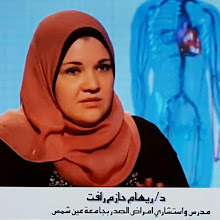.Definition:
o Thin-walled–less than 1 mm
o Air-filled space
o Contained within the lung
o 1 cm in size when distended
o Walls may be formed by pleura, septa, or compressed lung tissue
Other air-containing structures:
1.Pneumatocoele:
Thin-walled (< 1mm), gas-filled space in the lung developing in association with acute pneumonia, such as staph, and frequently transient
2.Cavity: Gas-containing space in the lung having a wall > 1 mm thick
3.Cyst: Thin-walled, air- or fluid-filled, with a wall that contains respiratory epithelium, cartilage, smooth muscle and glands
4.Bleb: Intrapleural cystic space
Bulla terminology:
o One of them is a bulla
o Two or more of them are bullae (pronounced bully)
o Diseases which contain bullae are bullous diseases
General considerations:
o Enlarge progressively over a period of months to years
o Most are associated with emphysema
o May become infected or lead to pneumothorax
Primary Bullous Disease:
o Familial occurrence
o Increased incidence in Marfan's and Ehlers-Danlos
o Unlike the bullae associated with emphysema, there is usually no airway obstruction and there is normal parenchyma between bullae
Types of Bullae:
Type 1
§ Originate in a subpleural location usually in upper part of lung
§ Narrow neck
§ Produce passive atelectasis of adjacent lung tissue
§ Paraseptal emphysema
Type 2
§ Superficial in location
§ Very broad neck
§ Anterior edge of upper and middle lobes and along diaphragm
§ Contain blood vessels and strands of partially destroyed lung
§ Spontaneous pneumothorax
Type 3
§ Lie deep within lung substance
§ Like type 2, contain residual strands of lung tissue
§ Affect upper and lower lobes with same frequency
Imaging findings:
o Seen more in upper lobes
o Thin-walled, sharply demarcated areas containing no visible blood vessels on conventional radiography
o Only portion of wall is usually seen on conventional radiography
o They tend to trap air: May become larger on expiration
o Bullae may become so large as to render the remaining normal lung almost invisible, pancaked atop the hemidiaphragm = vanishing lung syndrome
Signs of an infected bulla:
o Air-fluid level
o Differentiation from lung abscess
1. Bulla contains less fluid
2. Much thinner wall
3.No surrounding pneumonitis
4.Patients less sick with infected bulla
o Clearing may take weeks to months
Bullous disease and spontaneous pneumothorax:
o Commonly occurs with small bulla affecting lung apices
o May be difficult to differentiate large bulla from pneumothorax
o Edge of a pneumothorax will usually parallel the chest wall curvature whereas edge of a bulla frequently curves inwards away from the chest wall
o CT may help
Clinical findings:
o 1° bullous disease usually has no symptoms
o When large, surgical removal may be performed
o Patients with chronic obstructive pulmonary disease tend to show little difference clinically or functionally with or without bullae
o Thin-walled–less than 1 mm
o Air-filled space
o Contained within the lung
o 1 cm in size when distended
o Walls may be formed by pleura, septa, or compressed lung tissue
Other air-containing structures:
1.Pneumatocoele:
Thin-walled (< 1mm), gas-filled space in the lung developing in association with acute pneumonia, such as staph, and frequently transient
2.Cavity: Gas-containing space in the lung having a wall > 1 mm thick
3.Cyst: Thin-walled, air- or fluid-filled, with a wall that contains respiratory epithelium, cartilage, smooth muscle and glands
4.Bleb: Intrapleural cystic space
Bulla terminology:
o One of them is a bulla
o Two or more of them are bullae (pronounced bully)
o Diseases which contain bullae are bullous diseases
General considerations:
o Enlarge progressively over a period of months to years
o Most are associated with emphysema
o May become infected or lead to pneumothorax
Primary Bullous Disease:
o Familial occurrence
o Increased incidence in Marfan's and Ehlers-Danlos
o Unlike the bullae associated with emphysema, there is usually no airway obstruction and there is normal parenchyma between bullae
Types of Bullae:
Type 1
§ Originate in a subpleural location usually in upper part of lung
§ Narrow neck
§ Produce passive atelectasis of adjacent lung tissue
§ Paraseptal emphysema
Type 2
§ Superficial in location
§ Very broad neck
§ Anterior edge of upper and middle lobes and along diaphragm
§ Contain blood vessels and strands of partially destroyed lung
§ Spontaneous pneumothorax
Type 3
§ Lie deep within lung substance
§ Like type 2, contain residual strands of lung tissue
§ Affect upper and lower lobes with same frequency
Imaging findings:
o Seen more in upper lobes
o Thin-walled, sharply demarcated areas containing no visible blood vessels on conventional radiography
o Only portion of wall is usually seen on conventional radiography
o They tend to trap air: May become larger on expiration
o Bullae may become so large as to render the remaining normal lung almost invisible, pancaked atop the hemidiaphragm = vanishing lung syndrome
Signs of an infected bulla:
o Air-fluid level
o Differentiation from lung abscess
1. Bulla contains less fluid
2. Much thinner wall
3.No surrounding pneumonitis
4.Patients less sick with infected bulla
o Clearing may take weeks to months
Bullous disease and spontaneous pneumothorax:
o Commonly occurs with small bulla affecting lung apices
o May be difficult to differentiate large bulla from pneumothorax
o Edge of a pneumothorax will usually parallel the chest wall curvature whereas edge of a bulla frequently curves inwards away from the chest wall
o CT may help
Clinical findings:
o 1° bullous disease usually has no symptoms
o When large, surgical removal may be performed
o Patients with chronic obstructive pulmonary disease tend to show little difference clinically or functionally with or without bullae



No comments:
Post a Comment